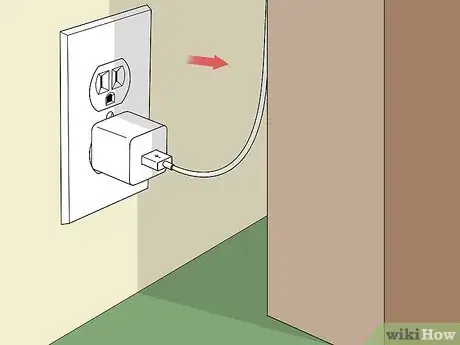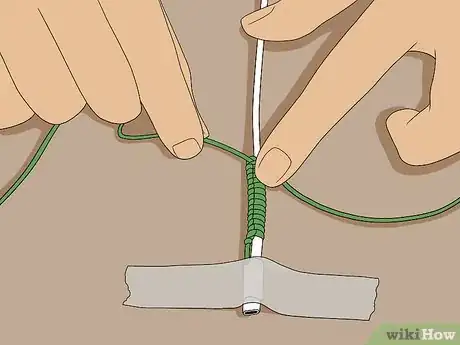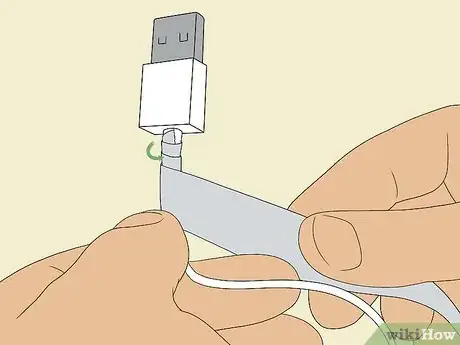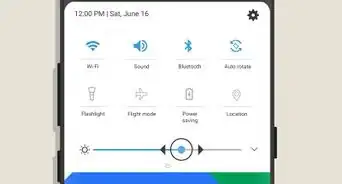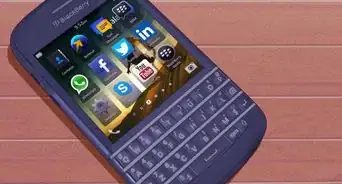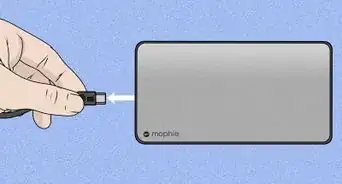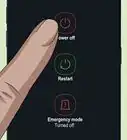This article was co-authored by wikiHow Staff. Our trained team of editors and researchers validate articles for accuracy and comprehensiveness. wikiHow's Content Management Team carefully monitors the work from our editorial staff to ensure that each article is backed by trusted research and meets our high quality standards.
There are 9 references cited in this article, which can be found at the bottom of the page.
This article has been viewed 53,839 times.
Learn more...
If you’re like most people these days, you probably have a variety of portable electronic devices. This means you also have an assortment of charging cables and other small electrical cables attached to things like headphones and earbuds. As you’ve probably noticed at one time or another, these cables tend to be rather delicate and prone to breaking, especially around the points where the wires meet the plug and device connectors. We know how annoying it is to have to replace your damaged cables all the time. Luckily, there are ways you can treat your cables with more care and protect them to make them last longer.
Things You Should Know
- Pull your cables only by holding the plastic end that plugs into your device or the wall.
- Coil your cables gently and store them in a protective case when not in use.
- Reinforce cables that are starting to fray with the spring from a retractable pen, paracord, or electrical tape.
Steps
Using Your Cables Gently
-
1Pull cables out by the end that connects to the plug or the device. Don’t pull your cables out by grabbing the wire somewhere in the middle, as this puts a lot more stress on the cable. Grab the hard plastic at either end, such as the USB connector that plugs into the charger block or the small bit that fits into your electronic device, and pull the cable out that way instead.[1]
- This applies to any kind of cable including phone chargers, laptop chargers, headphones, and any other kind of electrical cable.
- Even sturdy cables that aren’t as prone to breaking, like electrical appliance power cords, will last longer if you unplug them by grabbing the plug head instead of the wire.
-
2Try to avoid bending or squishing your cables when they’re plugged in. Give your cables lots of room and slack when you plug them in. Don’t squish them behind or underneath anything because the pressure and tension leads to broken cables very quickly.[2]
- For example, if you plug in your phone charger behind your bed or another piece of furniture, don’t push the headboard of the bed or the piece of furniture right up against the charger. Leave some clearance so the cable isn’t squished.
- If you use an electronic device like your phone while it’s plugged into a charger, try not to use it in a position that requires you to bend or pull on the cable.
Advertisement -
3Loop loose cables on top of themselves 3-4 times to transport them safely. Coil a cable gently on top of itself 3-4 times, so it’s about 1/3 or 1/4 of its size, then tuck the ends under the loop to secure it. Don’t just squish a cable together and shove it in a bag or fold it tightly and tie the ends in a knot because this puts a lot of stress on the wires.[3]
- You can easily tuck a cable looped in this manner into a small pocket inside of your backpack or suitcase to transport it safely without damaging it.
-
4Keep your cables in a protective case when you’re not using them. Purchase cases for your electronic devices that have pockets for the cables or buy a general electronics and cable organizing case. Loop your cables gently on top of themselves when you’re not using them and stick them into a pocket in a case to keep them safe and protected.[4]
- This will prevent accidents like accidentally rolling over your cables with an office chair or otherwise squishing, bending, and putting stress on them.
- You can buy an electronics and cable organizer case online for under $15 USD. You could also look at local electronics stores.
Reinforcing Charger Cables
-
1Wrap a pen spring around the end of a cable wire to prevent fraying. Unscrew a retractable pen and take the metal spring off the ink tube. Twist the spring around the sensitive end point of a cable where the wire meets the connector.[5]
- This will help prevent fraying at the cable’s most delicate point while still keeping it flexible.
- Use 2 pens springs to reinforce both sensitive ends. Put 1 where the wire connects to the charger connection and 1 where it meets the device connector side.
- Keep in mind that your pen won’t work after you take the spring out, so this might not be the best option if you want to reinforce a whole bunch of cables, since you’ll be left with a bunch of non-working pens.
-
2Buy commercial cable protectors to reinforce multiple cables. Purchase cable protectors made out of rubber or another flexible material. Twist or slip the protectors onto the ends of the wire where it meets the connectors to prevent the wire from breaking due to tension and bending.[6]
- These types of protectors look like thick rubber spirals and come in a variety of colors. You just coil them onto the cable where you want to protect it. Some other styles just have an open side that you stretch out to slip the protector over the cable.
- You can use 2 protectors per cable for maximum protection. Just slide the first one all the way down the wire to where it meets the charger block. Slide another one onto the part of the wire where it meets the device connector.
- You can also find fun decorative cable protectors that look like animals if you want to add some more flair to your cables.
- You can buy a pack of 24 or so basic spiral-style cable protectors online for under $10 USD.
-
3Slide paracord over a cable to cover and prevent fraying on the whole wire. Cut a piece of paracord to the length of a cable and pull out the white strand from inside the cord. Stick the narrowest end of your cable into the paracord and slide it through to the other side, so the whole wire is covered.[7]
- You can buy paracord in a variety of colors and patterns, so you can give your cables a unique appearance using this technique as well.
-
4Braid string or cord around a cable to decorate and reinforce the whole wire. Tape 1 end of a cable down onto a table or desk in front of you. Tie colored string or cord in 2-3 tight knots around the end of the wire where it meets the connector. Braid the string or cord together like you’re braiding a bracelet around the cable.[8]
- You can do this with just 1 color or with multiple colors of string or cord. It’s totally up to you and the look you want to give your cable!
-
5Tape up cables that are starting to fray with electrical tape for a cheap fix. Wrap electrical tape 2-3 times around the areas where a cable is starting to fray. Wrap outward from the frayed area along the cable, overlapping each wrap in a spiral pattern, another 2-3 times for added reinforcement.[9]
- You could also reinforce cables that aren’t fraying this way, but electrical tape doesn’t look pretty, so this is probably best reserved for when you want to prevent further damage to a cable.
Warnings
- Never unplug cables by pulling on the wire, as this puts unnecessary stress on the cable. Always pull out cables by grabbing the connector at the end instead.[11]⧼thumbs_response⧽
References
- ↑ https://www.dignited.com/51431/5-tips-to-prevent-your-charging-cables-from-breaking/
- ↑ https://www.pcmag.com/how-to/6-ways-youre-using-your-headphones-wrong
- ↑ http://www.iphone6manualguides.com/how-to-prevent-iphone-cord-cables-from-breaking/
- ↑ https://www.youtube.com/watch?v=Y7-_yIjJ5eI&feature=youtu.be&t=201
- ↑ https://www.youtube.com/watch?v=YGT_q5cNfug&feature=youtu.be&t=12
- ↑ https://www.youtube.com/watch?v=EkvokAK-5r8&feature=youtu.be&t=194
- ↑ https://says.com/my/tech/apple-please-fix-your-chargers
- ↑ https://www.youtube.com/watch?v=YGT_q5cNfug&feature=youtu.be&t=26
- ↑ https://www.cnet.com/how-to/ways-to-protect-and-fix-cords-around-the-home/

